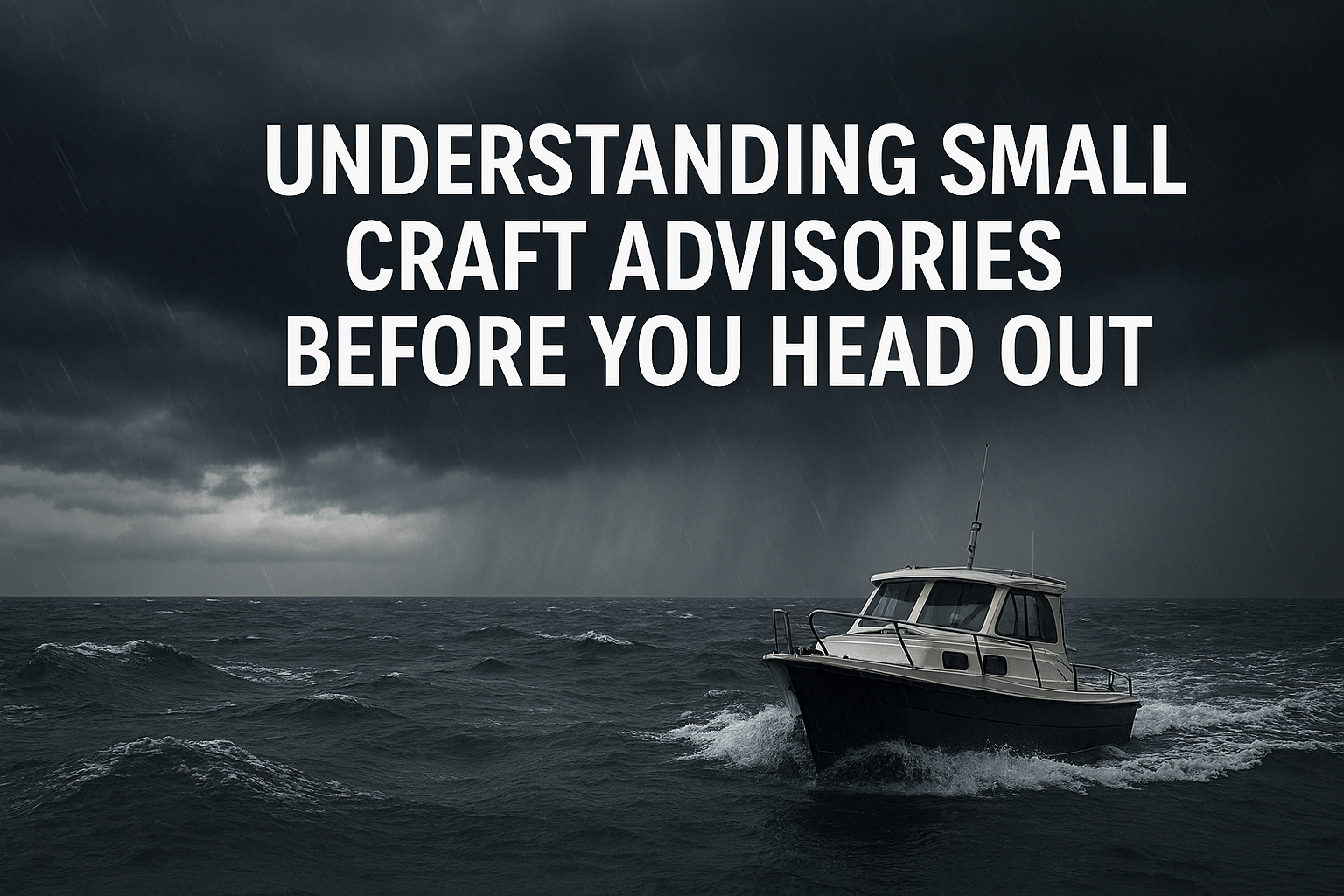Call: 1-800-832-7191
Understanding Small Craft Advisories Before You Head Out

Understanding Small Craft Advisories Before You Head Out
Boaters must stay informed. Understanding Small Craft Advisories before you head out helps prevent accidents and ensures safer outings. Furthermore, these advisories provide critical updates about weather, water conditions, and navigational hazards.
Before launching, check for alerts. NOAA advisories are designed to protect small craft operators from unexpected dangers. By reviewing them, boaters make smarter decisions and avoid risky conditions. Always check weather conditions every time you head out. A beautiful sunny morning can turn into a treacherous afternoon.
Why Advisories Matter for Small Craft Operators
Small craft are more vulnerable to changing conditions. Wind, waves, and visibility can shift rapidly. Unless you are trained in these types of operation, this can be a deadly trap. Therefore, advisories offer essential guidance for trip planning and safety.
In addition, these alerts help boaters comply with local regulations. Many states require awareness of current advisories before departure. Staying informed reduces liability and improves overall safety. At the end of the day, you want to get everyone in safely.
Moreover, advisories often include tips for handling emergencies. Knowing what to expect allows boaters to prepare gear and review safety procedures. This preparation builds confidence and reduces panic during unexpected events.
How to Access and Interpret Advisories
Finding advisories is simple. Most are available online through official NOAA channels and local marine authorities. Mobile apps also provide real-time updates.
Once accessed, read them carefully. Advisories include wind speed, wave height, visibility, and recommended actions. Understanding these details helps boaters adjust plans accordingly.
For example, an advisory may suggest delaying departure or choosing a different route. These recommendations are based on expert analysis and should be taken seriously. Ignoring them can lead to dangerous situations.
Understanding Small Craft Advisories Before You Head Out Saves Lives
Every season brings new risks. Understanding Small Craft Advisories before you head out ensures boaters are ready for changing conditions. These alerts are especially important during transitional weather periods. Remember that in Connecticut, spring and fall bring huge temperature fluctuations.
Furthermore, advisories support rescue efforts. When boaters follow guidance, emergency services face fewer incidents. This cooperation strengthens community safety and reduces strain on resources.
Additionally, sharing advisory information with fellow boaters promotes collective awareness. A well-informed group makes better decisions and responds more effectively to emergencies. Safety becomes a shared responsibility.
Planning Ahead with NOAA Guidance
Preparation begins before arrival at the dock. Review advisories the night before and again in the morning. Conditions can change quickly, especially in coastal areas.
Also, pack accordingly. If advisories warn of rough waters, bring extra flotation devices and secure loose gear. These small adjustments make a big difference.
Moreover, consider alternate plans. If conditions worsen, having a backup location or schedule prevents disappointment and keeps everyone safe. Flexibility is key to responsible boating.
Final Thoughts on Understanding Small Craft Advisories Before You Head Out
Smart boating starts with awareness. Understanding Small Craft Advisories Before You Head Out empowers boaters to make informed, safe decisions. These alerts are not suggestions—they are essential tools for survival and success.
By checking advisories regularly, boaters protect themselves, their loved ones, and their vessels. With each trip, safety becomes second nature. Let NASBLA advisories guide your journey and keep your adventures secure.
Did you enjoy this blog? Read more on our Boaters Blog page!
